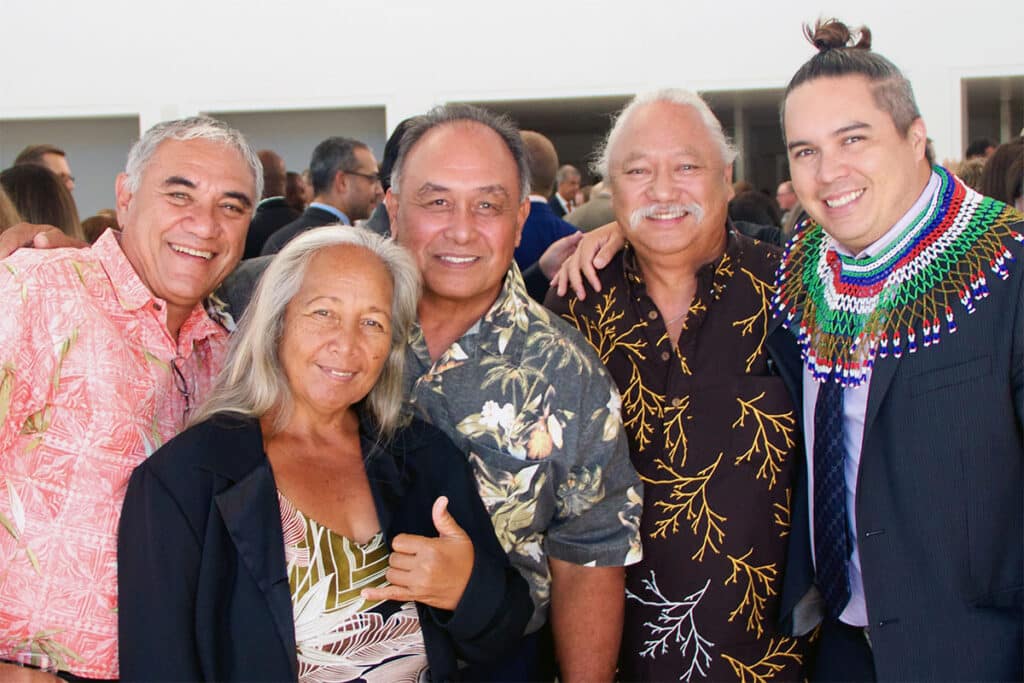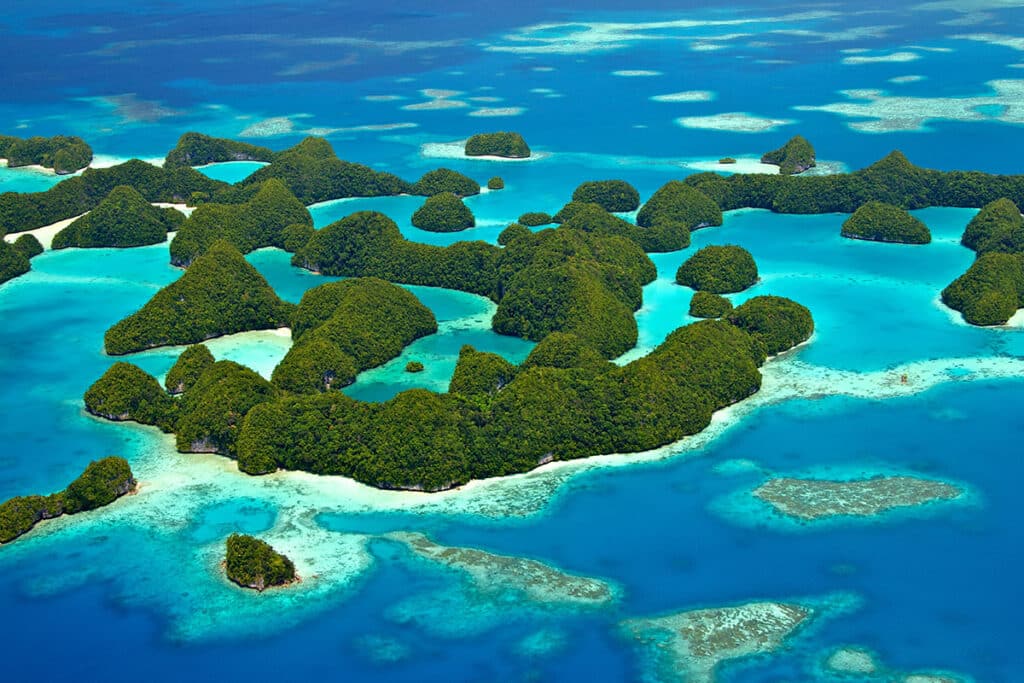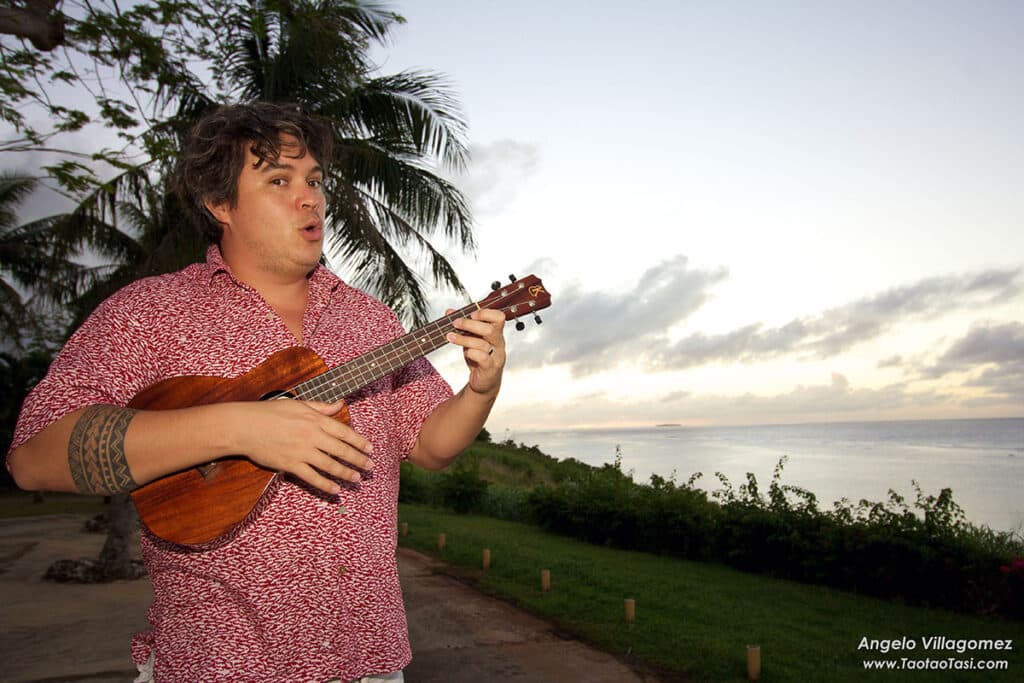BLOG / BLOG POST

Indigenous-Led Marine Conservation Should Be the Future of Our Movement
By Angelo Villagomez
Angelo Villagomez, senior officer at The Pew Charitable Trusts, is the campaigns manager for Blue Nature Alliance, a global partnership that seeks to protect 18 million square kilometers of ocean in support of the global goal to protect at least 30 percent of nature by 2030. Villagomez, who identifies as Indigenous Chamorro, is a co-author on a recent scientific publication, Advancing Social Equity in and Through Marine Conservation, and in this guest blog post for Green 2.0, he writes about how including Indigenous people in conservation can lead to more durable outcomes.
The Pacific Ocean is larger than all of Earth’s country landmasses combined and makes up almost half of the world’s water surface. Oceania, stretching east to west from Rapa Nui to Palau and north to south from Hawaii to Aotearoa, is home to more than 43 million people who speak 1,500 distinct languages. These islands and their surrounding waters host some of the world’s biggest conservation initiatives and most lucrative fisheries.
Yet to my knowledge only two Native Pacific Islanders work for big environment non-government organizations (ENGOs) and foundations in Washington, D.C. I’m one of them.
This is not unique to the Pacific. Indigenous peoples around the world are longtime stewards of the last remnants of wilderness on our planet: An analysis published in 2018 found that Indigenous peoples manage or have tenure rights over a quarter of the world’s land surface, including about 40 percent of all terrestrial protected areas and ecologically intact landscapes. But Indigenous peoples are underrepresented at all levels of the conservation movement, and almost completely absent from the top.
Some Pacific Islanders and Indigenous peoples work out “in the field,” but very few serve in senior leadership (or even management) positions within the large ENGOs and foundations. As a result—and to the detriment of effective and durable conservation goals—Indigenous peoples have had limited input into the development of many global conservation initiatives, even those in our own backyard.

The exclusion—intentional or not—of Indigenous peoples’ voices and visions, knowledge systems, and cultural perspectives from conservation has kept our movement from reaching its full potential of ideas, knowledge, and action. But although it’s urgent to make substantial changes to the practice of conservation, it’s not too late.
I’m a co-author of a recently published peer-reviewed article, “Advancing Social Equity in and Through Marine Conservation,” which suggests ways for ocean conservation institutions to become more equitable in their approach, including how we work with Indigenous peoples and local communities.
In the paper, my co-authors and I offer advice on how these institutions can be more aware of who they are at an institutional level. Addressing team composition at all levels of an organization can be a first step, but it must go beyond that: Each marine conservation organization—including nongovernmental organizations, advocacy groups, and funders—will need to establish a guiding philosophy, overarching mandate, metrics, and culture that embrace and support actions to advance social equity. This may require organizations to create an awareness of how they’ve represented and worked historically, and how they represent and work now, with Indigenous peoples and local communities—followed by organizational reflection on what changes may be needed to improve their relationships with these groups.
We also offer advice to ocean conservation institutions in changing how they operate at the procedural and operational levels. By procedural, we mean the formal and informal principles that inform the work of these institutions. For example, we strongly suggest that marine conservation organizations consider articulating a code of conduct or set of social principles to guide their activities with Indigenous communities. These codes of conduct, such as the one developed by the Blue Nature Alliance, should be inclusive of all aspects of equity in conservation.
It’s also important for these organizations to develop adequate knowledge of the social, economic, and cultural contexts—the human dimensions of marine conservation—in the areas where they engage. Ocean conservation organizations should consider hiring personnel with expertise in human dimensions and/or building the capacity of the decision-makers to prioritize the integration of equity into their policies, programs, actions, and funding portfolios.

The Indigenous leadership that already exists in the ocean conservation movement will emerge when our knowledge and values are fully included in the decision-making process. Such an emergence is already starting, from the handful of career staff and conservation practitioners like myself to glass ceiling-shattering leaders such as U.S. Interior Secretary Deb Haaland. At The Pew Charitable Trusts, I’ve seen growing Indigenous inclusion over the years with the organization’s work in the Marianas and Hawaii.
But to reach the goal of protecting at least 30 percent of nature by 2030, organizations such as mine that work on marine conservation still have a ways to go in promoting Indigenous inclusion. Doing a better job of addressing the who and the how of conservation will make the outcomes of our efforts to protect the ocean more durable. Although strong scientific evidence supports the protection of at least 30 percent of the ocean, we can make this effort more equitable by going beyond just area coverage in defining conservation success. We need to ensure that we’re putting our marine conservation areas in the right places and that the longtime stewards of nature are involved and leading the efforts. A great example is the Papahānaumokuākea Marine National Monument in Hawaii, where Indigenous people are intentionally part of the governance bodies.
Ocean conservation organizations also need to ensure that long-term funding is identified for ongoing research efforts that include traditional knowledge studies, social science, community engagement, and participation in management and enforcement. Although most conservation decisions eventually must be made by leaders in a top-down manner, designing effective and equitable policies requires a bottom-up approach—which will ensure that conservation efforts benefit both nature and people.
For more information about Angelo Villagomez, follow Angelo on Twitter @TaotaoTasi.
To learn more about Blue Nature Alliance, visit bluenaturealliance.org. To learn more about The Pew Charitable Trusts’ ocean conservation work, visit pewtrusts.org/en/topics/oceans and follow on Twitter @PewEnvironment.
